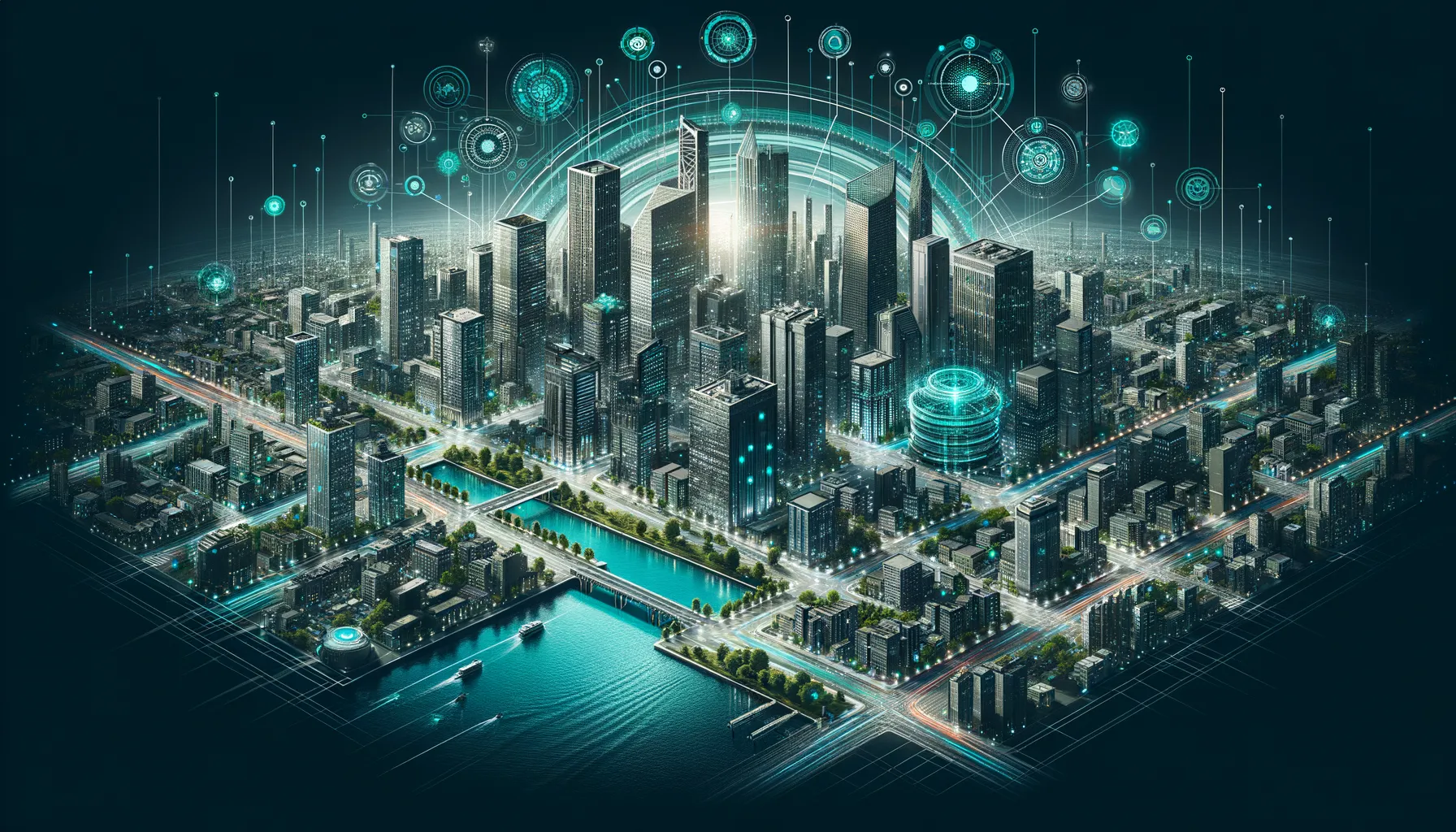Thursday 13 March 2025, 01:11 PM
Smart city innovations transforming urban living
Smart cities use tech and data to enhance urban life, improving efficiency, sustainability, and livability via IoT, transport, energy, safety, and healthcare innovations.
Introduction
Have you ever wondered how cities are evolving with the rapid advancement of technology? From intelligent traffic management systems to energy-efficient buildings, smart city innovations are reshaping the way we experience urban life. Let's dive into some of the fascinating developments that are transforming our cities into more connected, efficient, and sustainable places to live.
What are smart cities?
Before we get ahead of ourselves, let's clarify what we mean by "smart cities." In essence, a smart city leverages technology and data to improve the quality of life for its residents. By integrating information and communication technologies (ICT) with Internet of Things (IoT) devices, cities can collect and analyze data to manage resources more effectively. The goal? To make urban environments more efficient, sustainable, and livable.
The rise of IoT in urban planning
One of the key drivers behind smart city innovations is the Internet of Things. IoT devices can range from sensors that monitor air quality to smart streetlights that adjust brightness based on pedestrian traffic. By embedding these devices throughout the city infrastructure, municipalities can gather real-time data to inform decision-making processes.
For instance, smart waste management systems use sensors in trash bins to detect when they're full. This information is relayed to collection services, optimizing routes and reducing unnecessary pickups. Not only does this save time and resources, but it also contributes to a cleaner city environment.
Smart transportation solutions
Traffic congestion is a bane for city dwellers worldwide. Enter smart transportation systems, which aim to streamline traffic flow and reduce commuting times. Intelligent traffic signals adapt in real-time to changing traffic conditions, prioritizing lanes that need it most.
Public transit is also getting a tech upgrade. Mobile apps provide real-time updates on bus and train schedules, while contactless payment systems make hopping on and off public transportation a breeze. Some cities are even experimenting with autonomous shuttles in designated areas, offering a glimpse into the future of urban mobility.
Bike-sharing and electric scooters have emerged as popular alternatives for short-distance travel. With GPS tracking and mobile payment options, these micro-mobility solutions offer convenient and eco-friendly ways to navigate the city.
Sustainable energy management
As cities grow, so does their energy consumption. Smart cities are addressing this challenge by implementing sustainable energy solutions. Smart grids, for example, enable two-way communication between energy providers and consumers. This allows for better integration of renewable energy sources like solar and wind into the power supply.
Buildings are becoming more energy-efficient, too. Smart thermostats and lighting systems adjust settings based on occupancy and time of day, reducing unnecessary energy use. Some buildings even generate their own energy through solar panels and feed excess power back into the grid.
Additionally, electric vehicle (EV) charging stations are becoming more prevalent, encouraging the adoption of EVs. Some cities are piloting smart charging stations that optimize charging times based on grid demand and energy prices.
Enhancing public safety with technology
Safety is a top priority for any city, and technology is playing a significant role in enhancing public security. Surveillance cameras equipped with AI can detect unusual activities and alert authorities in real time. While this raises privacy concerns, when implemented responsibly, it can help prevent crimes and improve emergency response times.
Smart streetlights not only save energy but can also brighten when someone passes by, improving visibility at night. Emergency response systems are becoming more integrated, allowing for quicker dispatch of police, fire, and medical services when needed.
Furthermore, mobile apps enable residents to report incidents like potholes, graffiti, or broken streetlights directly to city officials, fostering a collaborative approach to maintaining public spaces.
Improving urban living with smart healthcare
Healthcare access is a critical aspect of urban living. Smart cities are leveraging technology to enhance healthcare services. Telemedicine platforms allow residents to consult with healthcare professionals remotely, reducing the need for in-person visits.
Wearable health devices monitor vital signs and can alert users to potential health issues before they become serious. In some cases, data from these devices can be shared (with consent) with healthcare providers for better patient care.
Additionally, smart pharmacies that automate prescription dispensing are reducing wait times and improving medication management.
Challenges and the future of smart cities
While the prospects of smart cities are exciting, they are not without challenges. Privacy and data security are major concerns. The vast amount of data collected raises questions about who has access to it and how it's protected.
There's also the issue of digital divide. Not all residents may have equal access to the technologies that make smart cities function, potentially exacerbating social inequalities.
Moreover, implementing these technologies requires significant investment and coordination among various stakeholders, including government agencies, private companies, and the public.
Despite these challenges, the momentum toward smarter cities is undeniable. As technologies continue to advance, we can expect even more innovative solutions to urban challenges.
Conclusion
Smart city innovations are undoubtedly transforming urban living. By harnessing the power of technology and data, cities are becoming more efficient, sustainable, and responsive to the needs of their residents. While there are hurdles to overcome, the benefits of smart cities have the potential to vastly improve the quality of urban life. It's an exciting time to be a part of this technological evolution, and we can't wait to see what's next on the horizon.

